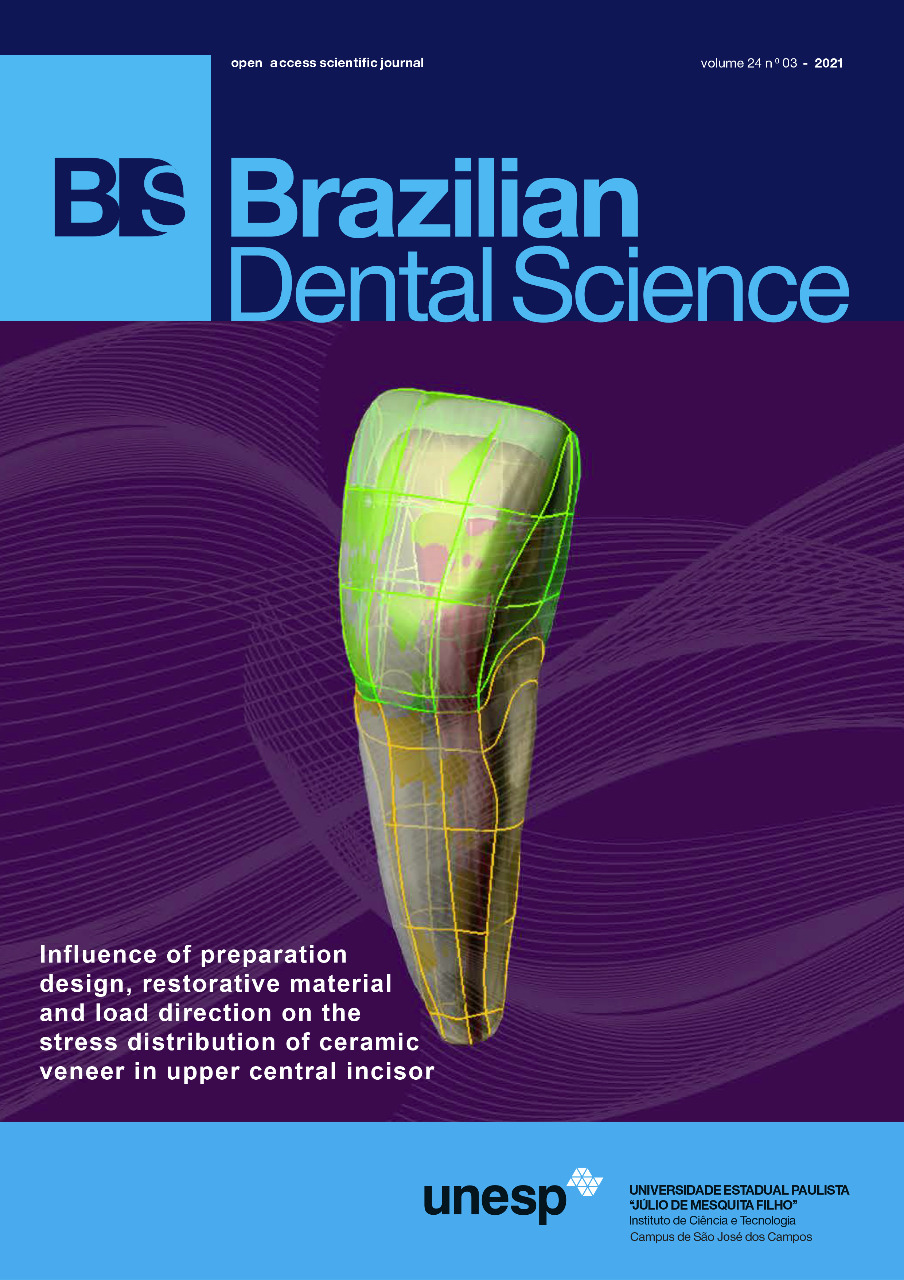Efficacy of fluoride varnishes with different compositions on white spot lesions remineralization
DOI:
https://doi.org/10.14295/bds.2021.v24i3.2478Resumo
Objective: To evaluate the efficacy of different fluoride varnishes on white spot lesions (WSL) remineralization. Material and Methods: Polished bovine enamel specimens were obtained (n = 60) and had their initial surface Knoop microhardness (SMH) determined. WSL were created and the SMH was measured again. Then, specimens were allocated into six groups: C – Control (without varnish); BF – Bifluorid 12 (6% NaF + 6% CaF2); DP – Duraphat (5% NaF); PF – Profluorid (5% NaF); FP - Fluor Protector (0.2% NaF + 0.9% difluorsilane); CW - Clinpro White Varnish (5% NaF + 5% TCP). After varnishes application, specimens were immersed in artificial saliva for 24 h. Then, pH-cycling was performed for 8 days and SMH was measured. Data were analyzed by one-way ANOVA and Tukey’s test. Results: Non-significant differences were observed among the groups at baseline (p = 0.187) and after WSL formation (p = 0.999). After treatments, significant differences were observed among the groups (p = 0.001). Mean % of alteration (SD) and results of Tukey test were: C- 92.40 (12.10)a; PF- 88.66 (10.66)a; FP- 85.90 (14.49)ab; BF- 67.85 (17.86)bc; CW- 66.60 (18.48)c; DP- 58.62 (8.69)c. Conclusion:. Bifluorid 12, Clinpro White Varnish, and Duraphat showed higher efficacy than artificial saliva in promoting the remineralization of WSL, nevertheless, none of the treatments were able to recover sound enamel baseline microhardness.
Keywords
Dental caries; Fluoride; Fluoride varnishes.
Downloads
Downloads
Publicado
Como Citar
Edição
Seção
Licença
TRANSFERÊNCIA DE DIREITOS AUTORAIS E DECLARAÇÃO DE RESPONSABILIDADE
Toda a propriedade de direitos autorais do artigo "____________________________________________________________________" é transferido do autor(es) para a CIÊNCIA ODONTOLÓGICA BRASILEIRA, no caso do trabalho ser publicado. O artigo não foi publicado em outro lugar e não foi submetido simultaneamente para publicação em outra revista.
Vimos por meio deste, atestar que trabalho é original e não apresenta dados manipulados, fraude ou plágio. Fizemos contribuição científica significativa para o estudo e estamos cientes dos dados apresentados e de acordo com a versão final do artigo. Assumimos total responsabilidade pelos aspectos éticos do estudo.
Este texto deve ser impresso e assinado por todos os autores. A versão digitalizada deverá ser apresentada como arquivo suplementar durante o processo de submissão.




























